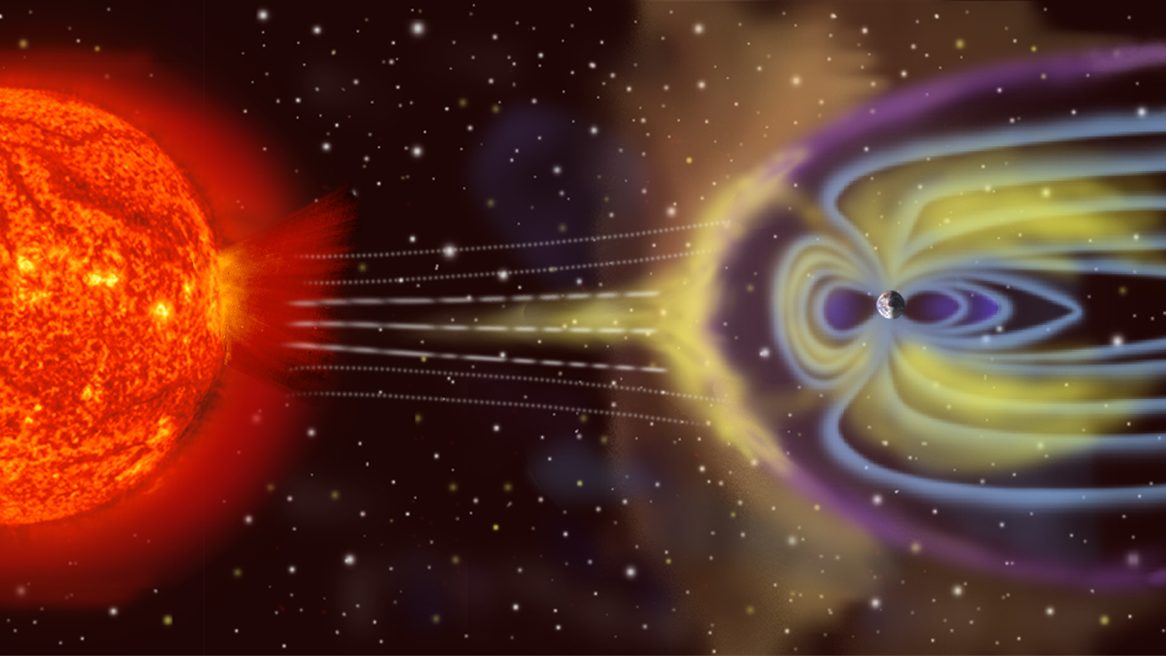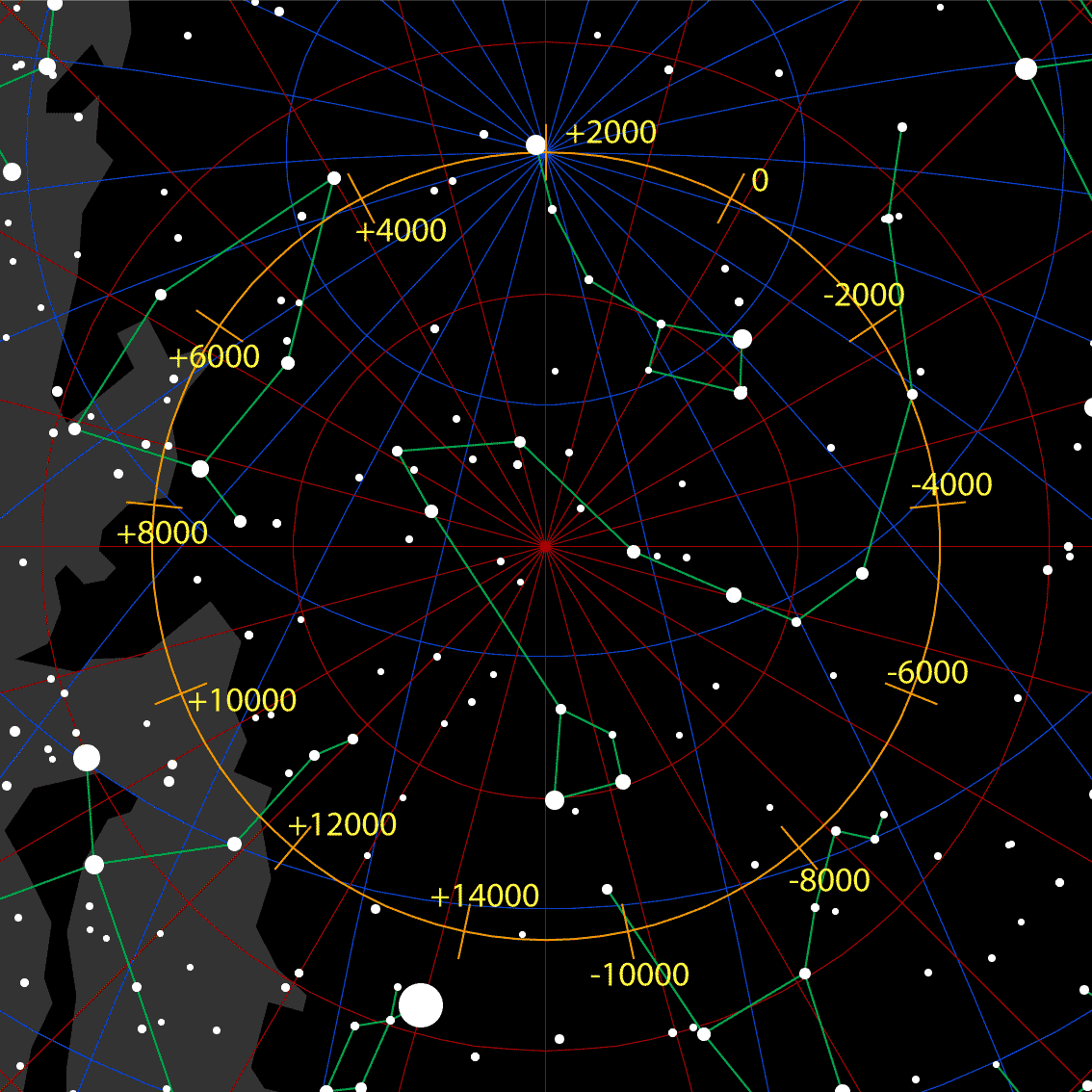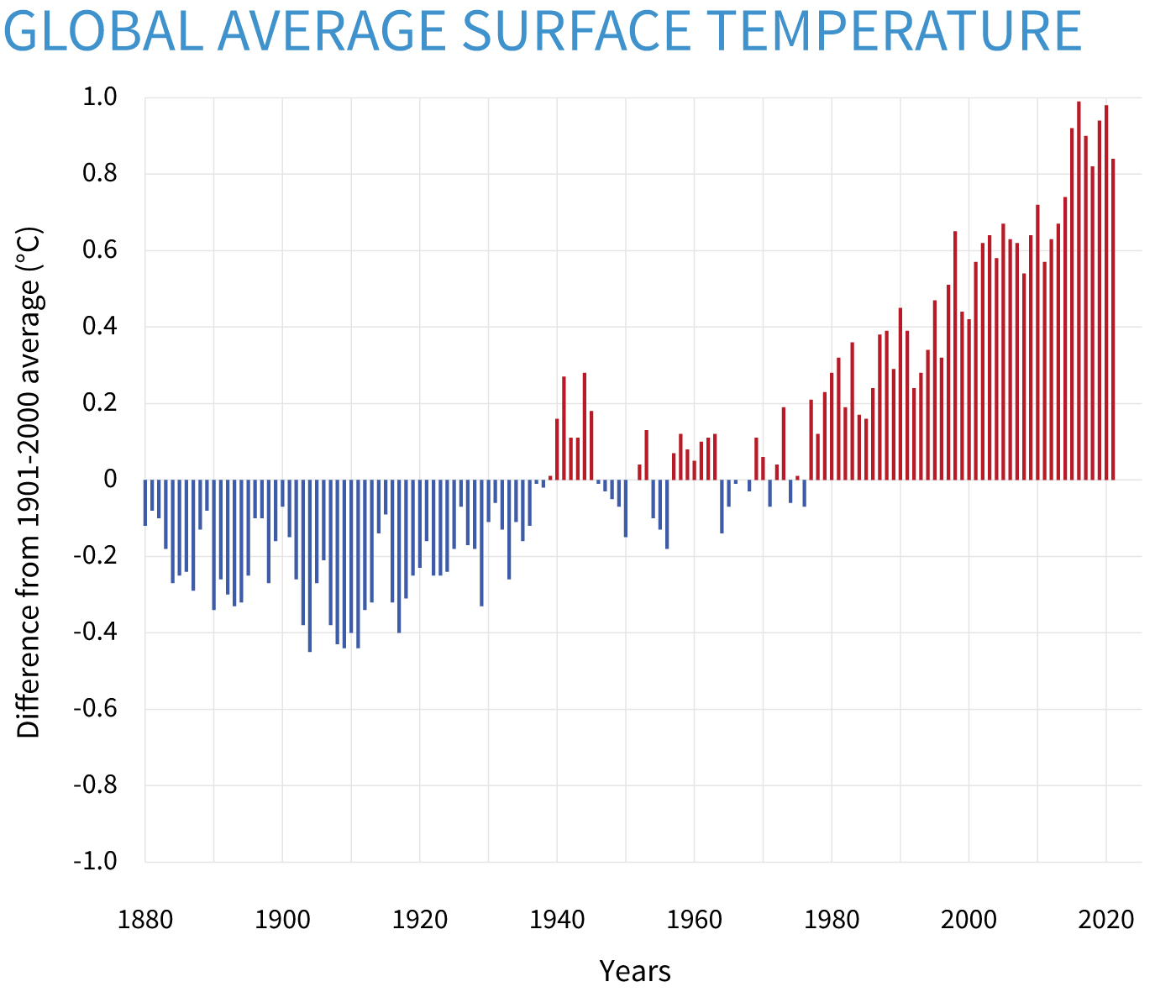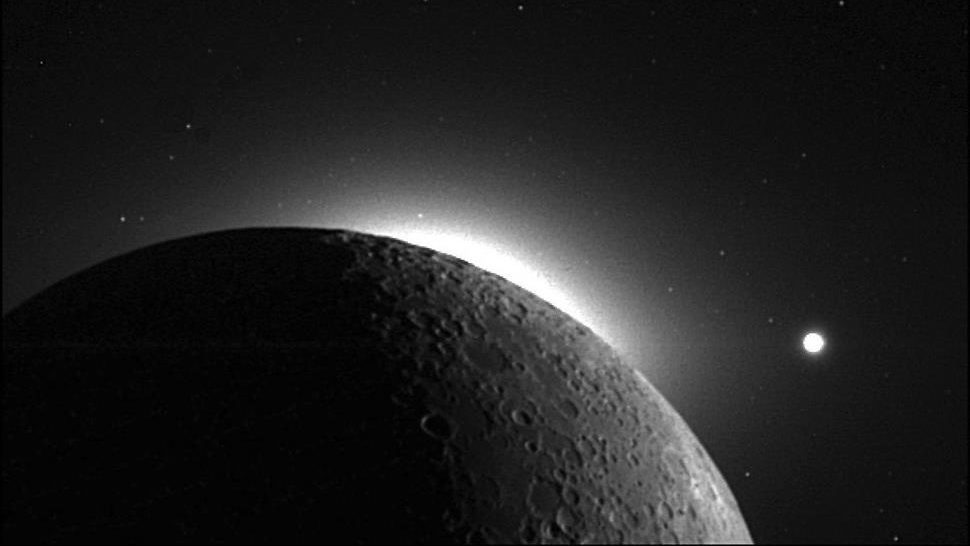Ask Ethan: Is Earth’s climate changing as the Sun loses mass?

- Over time, the Sun fuses light elements into heavier ones in its core, converting matter into energy via Einstein’s E = mc², which causes it to lose mass over time.
- As the Sun loses mass, all of the planets, including Earth, are compelled to slowly spiral outward in their orbits, migrating farther away from the Sun.
- This should change Earth’s climate, but there are other factors that influence Earth’s climate as well. When you compare the different factors at play, will Earth cool, warm, or something else?
One of the most important rules in all of physics is the equivalence between mass and energy, first put forth by Einstein over 100 years ago: E = mc². Perhaps most famously, this is the process at play inside all stars like the Sun: where light elements get fused into heavier ones through nuclear reactions, but where the products of the reactions are less massive than the reactants that go into them. The remaining mass gets converted into energy, where it provides light and heat to the greater Universe, including to planets like Earth. It’s these reactions, powered by nuclear fusion, that are at the heart of all Sun-like stars, with the conversion of mass into energy responsible for ultimately making the stars (and Sun) shine.
But the Earth also relies on the Sun’s gravitational influence to keep it in orbit, and as the Sun loses mass, that’s going to cause Earth’s orbit to change. When our orbit changes, will the climate change as well? And if so, how? That’s the question of Corina Gherasimescu, who inquires:
“I came across an old article… about the Sun losing mass and pushing all planets further with each rotation. Can you tell me what this means in terms of climate change and how it would affect life on Earth?”
The climate will indeed change, although there are several other factors at play that cause the climate to naturally change as well. Because physics and astrophysics are quantitative sciences, we need to factor in “how much” each of these changes influences our climate, and then see which effects are the dominant ones.

The Earth’s energy balance
To figure out how Earth’s temperature is going to be affected, we first have to understand what determines Earth’s energy balance. Perhaps surprisingly, there are only a few major factors at play:
- how bright-and-luminous the source of external energy (e.g., the Sun) is,
- how far away the Earth is from its energy source,
- how reflective vs. how absorptive the Earth is to that energy,
- how much internal heat the Earth itself generates,
- and how efficiently the Earth’s atmosphere traps that heat vs. how efficiently it radiates that heat back out into space.
For our purposes, the internal heat generated by the Earth is negligible, as it’s primarily due to two factors — gravitational contraction of the planet and the radioactive decay of elements within the Earth — that are not going to change significantly over time.
We can also neglect changes in Earth’s reflectivity (or albedo) and the efficiency of the heat-trapping of the atmosphere, because those changes, at least on relatively short timescales, are going to be dominated by human factors, not solar factors. In particular, reflectivity increases with more ice and more clouds, and decreases with less ice and fewer clouds, while the atmosphere more efficiently traps heat with greater concentrations of methane, carbon dioxide, and water vapor in our atmosphere. These are the factors that dominate Earth’s changing climate today.

But what if there were no human factors: no greenhouse gas emissions, no airplane flights or pollutants to seed clouds, no melting of permafrost at high latitudes, etc.? What if all we had to deal with was the Sun, its evolving energy output, and the effect that its mass loss is presently having on altering the Earth-Sun distance?
That actually becomes something that’s relatively easy to calculate: both on short and on long timescales. On short timescales, the Sun naturally varies in how much energy it outputs, with the greatest variations coming due to the 11-year solar cycle. On average, the total solar irradiance at the distance of the Earth is around 1361 watts-per-square meter, where the peak value has reached values as high as 1362 W/m² (in the late 1950s) and has reached lows of just barely over 1360 W/m². That’s a natural variation that’s a little less than ±0.1%, indicating that things are relatively constant when it comes to the amount of energy that the Sun outputs.

Meanwhile, also on short timescales, the Earth-Sun distance varies only a little bit: with the Earth’s elliptical orbit being the dominant factor and the Moon’s gravitational effect — leading to the Earth being slightly closer to the Sun during full moons and slightly farther from the Sun during new moons — being the secondary contributor. During perihelion in 2024, which occurred on January 2 of this year, Earth was located at a minimum distance of 147,070,000 km (91,404,000 miles) from the Sun, while during aphelion, which only recently occurred on July 5 of this year, it reached a maximum distance of 152,070,000 km (94,511,000 miles) from the Sun. For comparison, the difference in Earth’s distance to the Sun between a new moon and a full moon varies only by about 10,000 km: less than the diameter of Earth itself.
That difference in distance between aphelion and perihelion is quite substantial, especially when you consider that how bright-and-luminous a source appears is related to the distance squared to that source. A 3.4% difference between aphelion and perihelion distances corresponds to a whopping 6.9% difference in solar irradiance on Earth: a highlight for just how sensitive Earth is to changes in distance that are relatively small with respect to planet Earth.

Longer-term changes
If you’re asking about temperature changes, however, you have to keep in mind that these short-term variations tend to average out over time. The Moon orbiting the Earth in an ellipse and the Earth-Moon system orbiting the Sun in an ellipse average out over months and years; it’s only the average Earth-Sun distance that matters for long-term changes to the amount of energy that Earth receives. On the other hand, it’s also long-term changes in the Sun’s energy output that matter; small variations or fluctuations don’t play much of a role on decadal or century-long timescales, as the 11-year solar cycle takes us through peaks and troughs that will average out over time.
So what are the longer-term changes that will ensue?
On slightly longer timescales, the major effects were worked out way back in the early 1900s, thanks to the work of Serbian astrophysicist Milutin Milankovitch. Milankovitch noted that, sure, the Earth:
- rotates on its axis,
- moves in an ellipse around the Sun,
- and has a natural satellite, the Moon, that gravitationally affects it,
as well as the fact that there are other bodies in the Solar System that gravitationally influence everything else. When you put all of these effects together, what Milankovitch found was fascinating.

First, the Earth’s axis, which is tipped at about 23.5 degrees at present, is precessing. The direction that our axis points changes over time, rotating to make a full circle on timescales of around 21,000 years. This precession effect helps explain why a sidereal (astronomical) year, where the Earth returns to the same point in orbit as it was a full revolution ago, doesn’t match up exactly with the tropical (calendar) year. It doesn’t, however, effect the net amount of energy received by the Earth.
Second, the Earth’s axial tilt, which is again presently 23.5°, actually varies by a little bit over time: known as a change in our planet’s obliquity. The Moon is a stabilizing force for our obliquity, which only varies between 22.1° at minimum and 24.5° at maximum. On timescales of ~41,000 years, the Earth’s axial tilt oscillates from minimum to maximum and back to minimum again. Mars, which has a comparable axial tilt but no large moon, experiences variations that take its tilt from about 10° up to about 50°.
Although a greater tilt means hotter summers and colder winters, it doesn’t change the overall heat content that the Earth receives or absorbs. The third factor, however, that Milankovitch predicted truly will have an impact on Earth’s temperature: changes to our orbital eccentricity.

The changes in Earth’s eccentricity, or how elongated the ellipse it traces out is compared to a perfect circle, actually varies tremendously. The variation itself is largely due to the gravitational tug arising from the gas giant planets, where the Earth’s eccentricity, e, could theoretically range from 0 (for a perfect circle) to 1 (which would be an infinitely long, narrow ellipse). At present, our eccentricity is small: e = 0.017 today. However, over timescales of approximately 100,000 years, our eccentricity varies: from a minimum of e = 0.0034, or almost a perfect circle, to e = 0.058, which is about 3.5 times our current eccentricity.
When Earth’s eccentricity is minimized, perihelion and aphelion differ by less than 1% in terms of the radiation Earth receives. When Earth’s eccentricity is at a maximum, however, that difference rises up to a whopping 23%, which is very significant. You might think to ask yourself, however, if you’re considering Earth’s entire orbit over a year, which one gives us more energy overall?
The answer is that when eccentricity is maximized, Earth receives the most energy overall per year: 0.24% more than it receives today. When the eccentricity is minimized, we receive the least amount of energy overall: 0.014% less than it receives today. These differences are small, sure, but they’re the dominant natural effect on medium-term timescales, dwarfing the 0.0002% variations from axial tilt changes and even the 0.08% variations from the sunspot cycle. Of course, the non-natural human contribution to climate change has resulted in more than 1.0° C (1.8° F) of warming since the dawn of the 20th century: by far the dominant force in our changing climate.

Very long-term changes
But on very long-term timescales, all of these oscillatory changes will average out, and humans won’t likely be around to dramatically alter the contents of Earth’s atmosphere. Even ice ages, which may or may not be fully driven by Milankovitch cycles (the jury is still out), will average out over time. But two trends will always persist for as long as the Sun continues to shine:
- the Sun will continue fusing light elements into heavy ones, losing mass,
- and the Sun’s core will slowly replace light (unfused) elements with heavier (fused) ones, causing internal changes to the Sun.
The mass loss one is simple and straightforward to calculate, since we can measure precisely the Sun’s total energy output: 3.8 × 1026 watts of power. That’s the equivalent of converting about 4.3 billion kilograms (4.7 million tons) of matter into pure energy with each passing second. Cumulatively, over the lifetime of the Sun, that means our Sun has lost about the mass of the planet Saturn: about 100 Earth masses or about 0.03% of the Sun’s original mass. Although the difference in our orbit with each passing year is tiny — we spiral outward by 1.5 cm per year, on average — this truly adds up over time. Over the 4.5 billion years of our Solar System’s history, we’ve migrated about 67,500 kilometers farther away from the Sun: corresponding to a reduction in the energy we should receive of about 0.09% over that time.

That’s a small change, but it’s non-zero, and in the negative (energy reduction) direction. However, what’s going on inside the core of the Sun is a very different process. Initially, the Sun’s core was made of about 70% hydrogen, 28% helium, and about 2% of everything else, combined. But now, 4.5 billion years later, a large amount of that hydrogen has been converted into helium, and that has caused three major changes in the Sun’s overall properties.
- The core has begun contracting, and that has caused it to heat up.
- The heating of the core has increased the rate of fusion within it, and also has caused a larger region of the Sun’s inside to cross that critical ~4,000,000 K threshold: the threshold for initiating fusion reactions.
- And the total energy output of the Sun has gone up substantially, increasing by about 20-25% over the past 4.5 billion years.
Even though the Sun’s brightness only increases by about 0.000000008% with every year that goes by from this effect, it’s additive, cumulative, and never stops. After another billion years goes by, the Sun’s energy output will be 8% greater than it is today, whereas the additional distance we migrate will only reduce the energy received by a further ~0.02%. And so, this sets up the ultimate climate catastrophe for future Earth inhabitants to reckon with: the eventual boiling of our oceans.

This “ultimate warming” scenario is both inevitable and also is completely unrelated to the climate changes and variations we’ve experienced over all of human history. While the Sun will continue to lose mass and push the planets (including Earth) farther away with each orbit, the dominant factor in the Sun’s evolution is the increasing energy output from within its core. After approximately 1-to-2 billion additional years have passed, our planet will receive so much heat that our oceans will boil, creating a cloud-deck situation similar to that on Venus. In relatively short order, life on Earth is then expected to come to an end, with the only realistic solution being to alter Earth’s orbit: an energetically difficult proposition!
At much later stages, around 5-to-7 billion years from now, the Sun will transform into a red giant, swallowing Mercury, Venus, and then, most likely the Earth. Simulations indicate that the Earth will migrate up to 8-to-10% farther away, but the Sun should swell to 110-115% times the size of the current Earth-Sun orbit: again, the Sun’s internal changes will dominate over the Earth’s orbital changes. Unless something changes in the long-term, first life on our planet, and then our planet itself, will be destroyed by ever-increasing heat from the Sun. But unless we change how we steward and manage our planet on much shorter timescales, we ensure that the climate is going to change a lot more severely — and largely, for the worse — before anything gets better.
Send in your Ask Ethan questions to startswithabang at gmail dot com!





